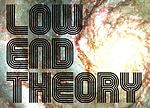Arroyo Seco (Los Angeles County)
Altadena, CaliforniaAngeles National ForestArroyo Seco (Los Angeles County)Canyons and gorges of CaliforniaCypress Park, Los Angeles ... and 22 more
Geography of Los AngelesGeography of Pasadena, CaliforniaGeography of the San Gabriel ValleyHighland Park, Los AngelesHistory of Los AngelesHistory of Los Angeles County, CaliforniaHistory of Pasadena, CaliforniaLa Cañada Flintridge, CaliforniaLandforms of Los Angeles County, CaliforniaLos Angeles County, California regionsMontecito Heights, Los AngelesMount Washington, Los AngelesNortheast Los AngelesRivers of Los Angeles County, CaliforniaRivers of Southern CaliforniaSan Gabriel MountainsSan Gabriel ValleySan Rafael HillsSouth Pasadena, CaliforniaTributaries of the Los Angeles RiverWashes of CaliforniaWorks Progress Administration in California

The Arroyo Seco, meaning "dry stream" in Spanish, is a 24.9-mile-long (40.1 km) seasonal river, canyon, watershed, and cultural area in Los Angeles County, California. The area was explored by Gaspar de Portolà who named the stream Arroyo Seco as this canyon had the least water of any he had seen. During this exploration he met the Chief Hahamog-na (Hahamonga) of the Tongva Indians.
Excerpt from the Wikipedia article Arroyo Seco (Los Angeles County) (License: CC BY-SA 3.0, Authors, Images).Arroyo Seco (Los Angeles County)
Avenue 19, Los Angeles Lincoln Heights
Geographical coordinates (GPS) Address Nearby Places Show on map
Geographical coordinates (GPS)
| Latitude | Longitude |
|---|---|
| N 34.078888888889 ° | E -118.22583333333 ° |
Address
Avenue 19
Avenue 19
90031 Los Angeles, Lincoln Heights
California, United States
Open on Google Maps









